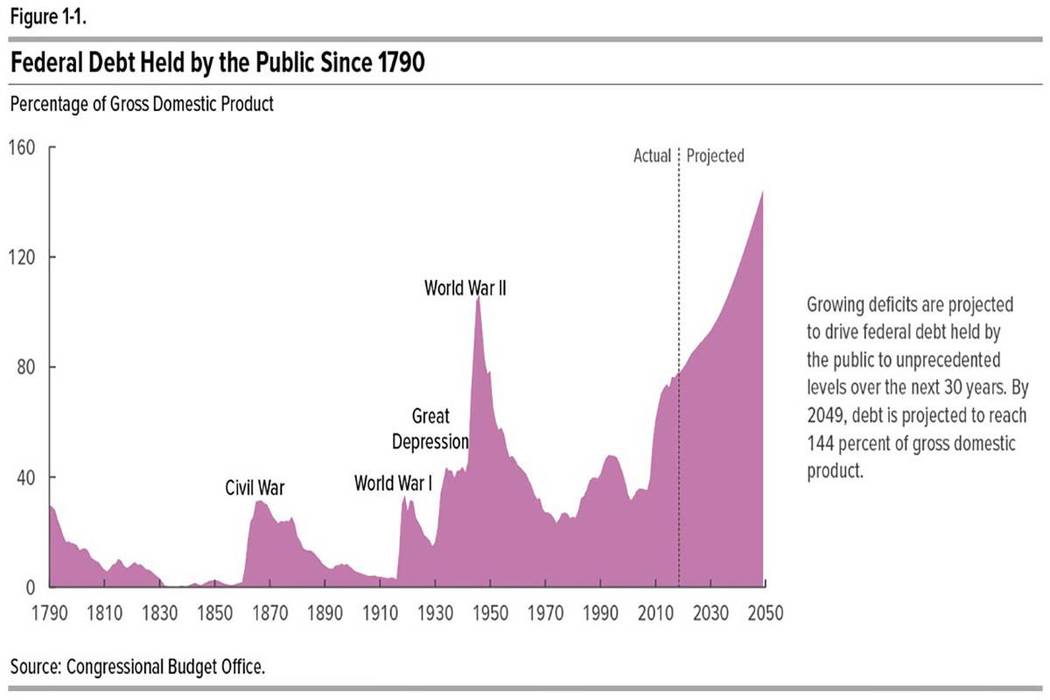EDITORIAL: CBO’s debt projections should terrify every American
The scariest thing you’ll see this summer isn’t at the movie theater. It’s the latest debt projections from the Congressional Budget Office.
America’s debt peaked in 1946 at 106 percent of gross domestic product. World War II triggered the jump. Over the next three decades, the debt steadily declined, dropping to 23 percent in 1974. Historically, that was still high. The debt-to-GDP ratio was 17 percent in 1929, just a decade after the end of World War I. Before WWI, the debt-to-GDP ratio had been in the single digits.
The CBO’s predictions don’t include a war, but they do include record deficits. In 2037, the debt-to-GDP ratio will be 108 percent, breaking the old record. In 2049, that ratio will be 144 percent, an unprecedented amount of red ink. In 2046, the United States will spend more paying interest on the national debt than on discretionary spending, which includes budgets at the departments of Defense, Health and Human Services, Education and Homeland Security.
Those numbers are only projections and can change based on a number of factors, including interest rates and economic growth. That means the debt could be even higher than projected. For one, the CBO’s model assumes that the Trump tax cuts will expire in 2027, as the law currently provides. It also assumes there won’t be a major war in the next 30 years.
The main drivers of the deficit are entitlements. In 1969, the government spent $26.7 billion on Social Security, the equivalent of 2.7 percent of GDP. In 2018, total spending was $982 billion or 4.9 percent of GDP. In 2049, the CBO projects Social Security spending to be 6.2 percent of GDP.
In 1969, federal spending on major health care programs was 0.8 percent of GDP. That category includes Medicare, Medicaid, the Children’s Health Insurance Program and Obamacare subsidies. In 2019, it was 5.2 percent of GDP. In 2049, the CBO projects it to be 9.3 percent of GDP.
This will drive federal spending up to 28 percent of GDP, compared to average spending of 20 percent of GDP over the past 50 years.
There are two inappropriate responses to these numbers. One, as exemplified by President Donald Trump, is to ignore them. During the campaign, Mr. Trump pledged not “to cut Social Security like every other Republican, and I’m not going to cut Medicare or Medicaid.”
Another poor choice, as exemplified by the leading Democrat presidential candidates, is to push for even more spending. Every major candidate supports increased government spending on health care through either “Medicare for All” or expanding Medicare. The money isn’t there.
Horror movies are scary because you never know what’s lurking around the corner. The federal deficit is scary, because we know exactly what’s lurking around the corner. But elected officials, enabled by voter apathy, won’t do anything about it.

















